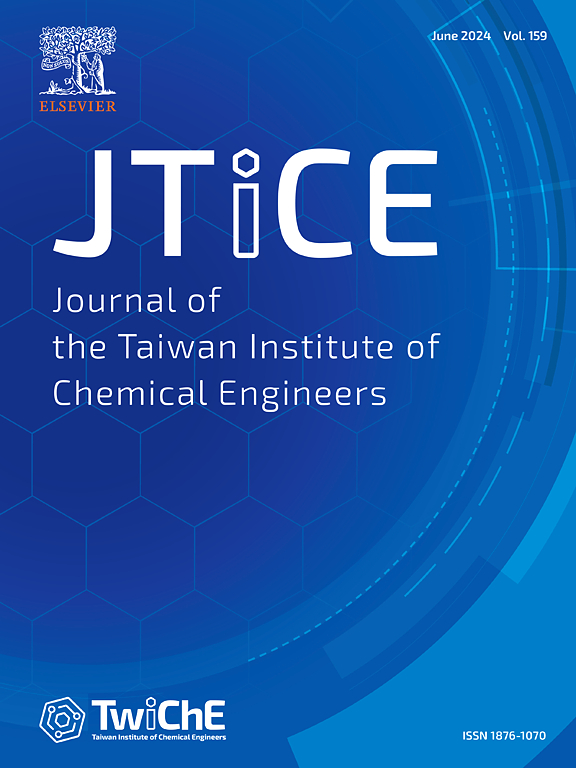An efficient and facile adonitol-based electrochemical chiral sensor for highly selective determination of tyrosine
IF 5.5
3区 工程技术
Q1 ENGINEERING, CHEMICAL
Journal of the Taiwan Institute of Chemical Engineers
Pub Date : 2025-04-02
DOI:10.1016/j.jtice.2025.106111
引用次数: 0
Abstract
Background
Amino acids (AAs) are important enantiomeric compounds which are used as important biomarkers for various metabolic diseases. Electrochemical sensor is one of the most important methods for chiral recognition of AAs. However, lots of electrochemical chiral sensors have exhibited some disadvantages such as low selectivity and repeatability. To over these obvious shortages, a facile and efficient electrochemical chiral sensing platform based on adonitol (Adonitol/GCE) was constructed for the recognition of tyrosine (Tyr) enantiomers with good identification efficiency (IL/ID = 1.67, ΔEp = 12 mV).
Methods
A relatively high recognition selectivity of 1.67 for Tyr enantiomers could be observed at the developed sensor by square wave voltammetry (SWV). The recognition mechanism was also proposed, the smaller steric hindrance and more appropriate intermolecular distance for selective formation of hydrogen bonds between Adonitol and l-Tyr contributed a lot to the higher affinity of the chiral interface for l-Tyr, which could be further verified by wettability measurements, CVs at different scan rates, UV–Vis spectroscopy and DFT calculations.
Significant Findings
A good linear relationship between the peak currents and Tyr enantiomer concentrations could be obtained, and the LOD (S/N = 3) values of l-Tyr and d-Tyr at Adonitol/GCE were 4.26 μM and 6.85 μM, respectively. Importantly, Adonitol/GCE also had the ability to predict the mass ratios of l-/D-Tyr enantiomers in the mixed solutions of known concentration. The facilely prepared chiral sensor also possesses excellent anti-interference ability, high stability, and good producibility. The pioneered fabrication of polyol-based electrochemical sensor could actuate the rational selection and construction of multifunctional chiral selectors.

求助全文
约1分钟内获得全文
求助全文
来源期刊
CiteScore
9.10
自引率
14.00%
发文量
362
审稿时长
35 days
期刊介绍:
Journal of the Taiwan Institute of Chemical Engineers (formerly known as Journal of the Chinese Institute of Chemical Engineers) publishes original works, from fundamental principles to practical applications, in the broad field of chemical engineering with special focus on three aspects: Chemical and Biomolecular Science and Technology, Energy and Environmental Science and Technology, and Materials Science and Technology. Authors should choose for their manuscript an appropriate aspect section and a few related classifications when submitting to the journal online.

 求助内容:
求助内容: 应助结果提醒方式:
应助结果提醒方式:


